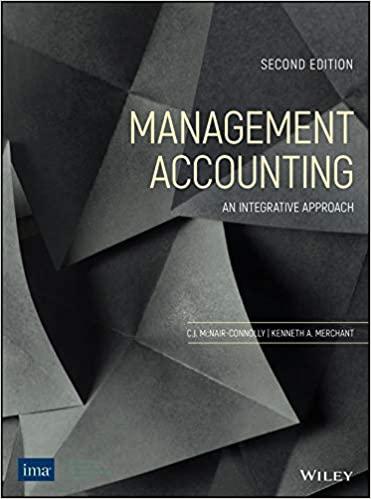Sherry has also made progress tackling many of Easy Airs activity-based costs. The information contained in the
Question:
Sherry has also made progress tackling many of Easy Air’s activity-based costs. The information contained in the DB 4.2a and DB 4.2c templates in your database is the result of her work. In addition to these templates, you will also need the worksheet Summary Easy Air to answer these questions.
a. Using the information in template DB 4.2a, calculate the average cost per passenger for each of the activities identified by Sherry.
b. Using the results from (a) calculate the percentage of the total cost per passenger for each category of cost.
c. You need to repeat these calculations for years 20x5 and 20x4.
d. Where do the problems seem to be? Specifically, where does most of the money from a passenger fare (remember, this is approximately $40 per ticket) go?
e. Next, move on to template 4.2d, where you will need to start applying activity- based logic. First, using the information in the Summary Easy Air worksheet, choose a driver for each of the cost pools in your datasheet. It is okay to use the same driver multiple times, so choose the most logical driver given the category and type of cost. For each choice, fill in the information in columns D, H, and L. You should use the same driver across the three years. If you cannot find a logical driver, default to number of passengers.
f. Using the driver you chose in (d) divide each of your costs by that driver for the year you are looking at in template 4.2d.
g. Now where does the problem appear to be? There may be more than one trouble spot, so be specific.
h. You may have noticed in template 4.2d that you are not asked for either percentages or totals. Why do you think this was done? Hint: The answer is not to make this problem shorter for you!
i. Advanced. Using the cost per driver occurrence, generate a percentage change analysis to help you better understand Easy Air’s cost issues. Use 20x4 as your baseline. Hint: When you fill in the template correctly, every number in 20x4 should read 100%. Every year after that should be less than 100%. What are the trends now?
j. Advanced. Using the cost per driver occurrence (for example, columns C, D, and G) generate a percentage change analysis from one year to the next. In this case, we will look at 20x4 vs. 20x5, followed by 20x5 vs. 20x6. Use the lower-numbered year as your baseline year. Do not bother to do the analysis in 20x4 as there is no other baseline year to compare it to. What do you see now?
k. Turn in the answers to the questions above and the associated worksheets to your instructor.
Step by Step Answer:

Managerial Accounting An Integrative Approach
ISBN: 9780999500491
2nd Edition
Authors: C J Mcnair Connoly, Kenneth Merchant





